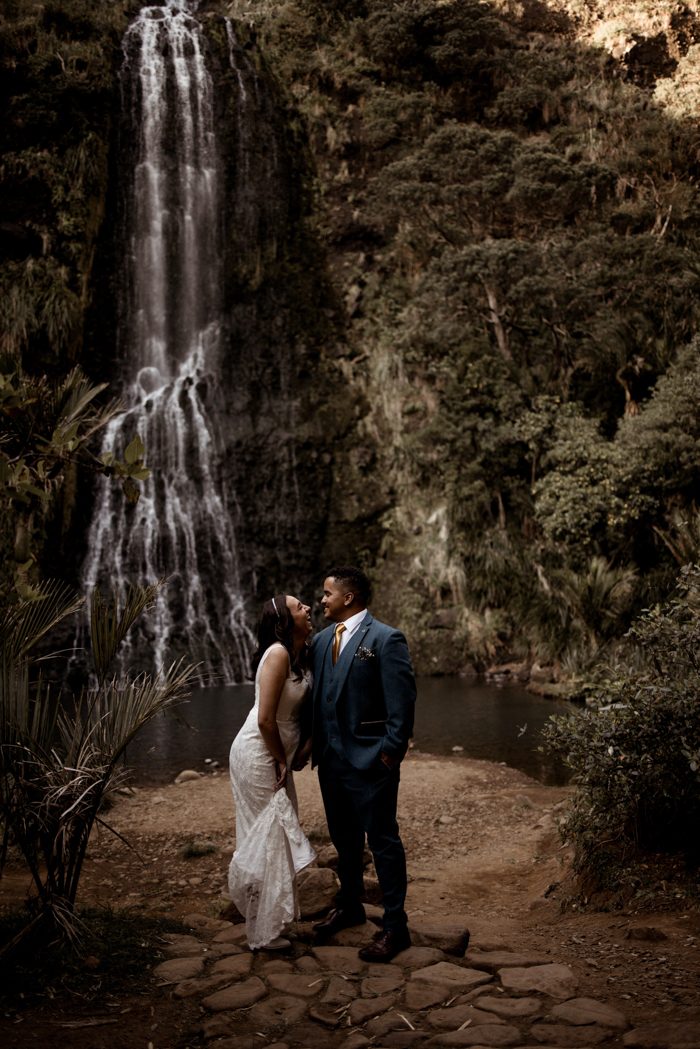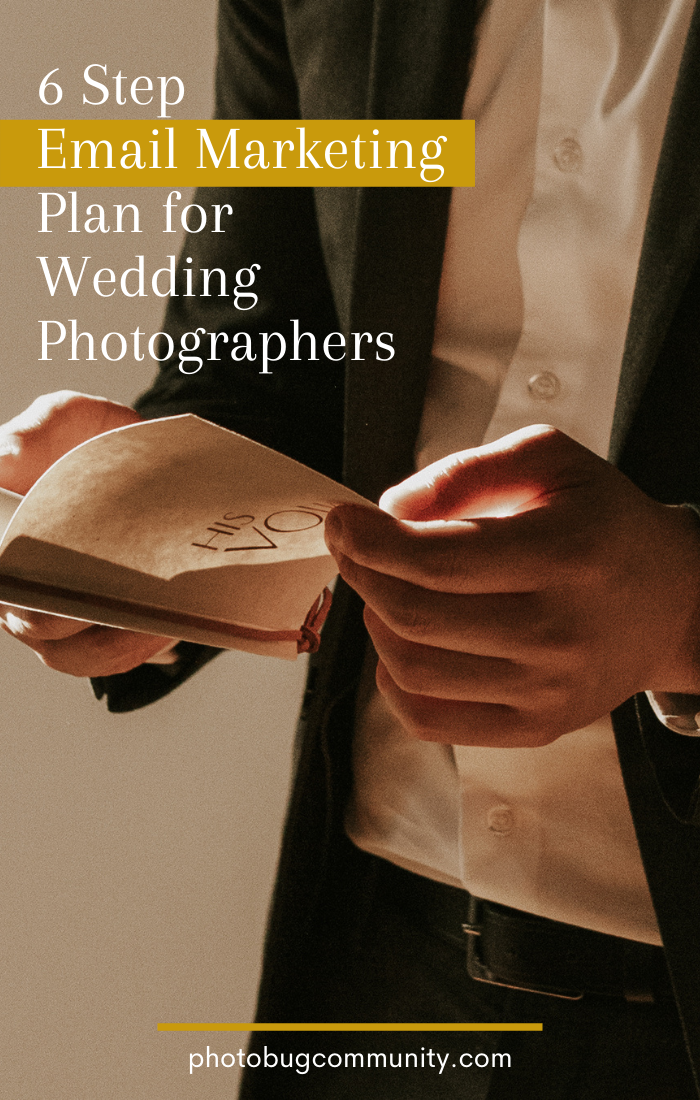Your go-to social media platform for marketing your business has just had an algorithm update. Then you discover there’s another platform that runs in an entirely different way that you need to learn. But, wait, now the servers of another platform have gone down for an entire day. Even though you had your social media publishing automated, there’s no one online to view all of the great content that you’ve curated. If this scenario sounds remotely familiar, it’s time to diversify your marketing efforts with email marketing.
Your marketing efforts should never rely on only one approach or platform. A holistic marketing strategy includes a mix of referrals, good business branding, paid marketing efforts (including memberships to websites like Junebug Weddings), content marketing, social media marketing, and email marketing. And this is just digital marketing. We know, it’s a lot.
It doesn’t matter how many social media platforms are available—new ones are popping up every day—direct email marketing is a better long tail strategy for your business. If you haven’t started your email marketing, you’re in luck. We’re here to walk you through it.

photo by Virginia & Evan
Step 1. Choose Your Email Marketing Software
First thing’s first, you need to pick an email marketing software. Most of these platforms offer trial periods and free email plans for businesses that are under a certain subscriber count, too. Here are a few of our favorites from the hundreds of software options available:
To make sure that you’re taking advantage of everything that your new email marketing software has to offer, spend some time reading through their onboarding materials. Many of these companies also offer specialized onboarding appointments where one of their team members will walk you through setup, best practices, and explain their features to you. That’s a huge perk that will keep you from getting frustrated later.

image by O’Brien Originals
Step 2. Create Your First Subscriber List Campaign
Now that you’re all set up with your email marketing tool of choice, it’s time to create your first subscriber list. If you’ve been collecting email addresses from your clients, that’s a good place to start.
Send your client list an email asking them to opt-in to your newsletter. Set some expectations about how often you’ll be sending emails—monthly or bi-monthly are typical for small business emails—to get them excited about hearing from you. Once you’ve gotten subscribers that have opted in, you can segment your subscribers by client type, existing clients, prospective clients, and local clients.
Photobug Tip:
Avoid segmenting your list too much. For the most part you’ll want to send the same emails to your customers and the target audience shouldn’t exclude folks from your list. However, if you decide to open up a deal on photo albums and want to email your subscribers about that, it wouldn’t make sense to send that a prospective client that you haven’t actually shot yet.

image by Hannah McMaster
Step 3. Analyze Your Data and Set Goals
Now that you’ve got a handle on who is subscribed to your list, analyze it to figure out where you stand. Just like your business budget, this isn’t a metric that should make you feel good or bad. It’s just a number! If you don’t have concrete data you can’t improve and setting goals later will be impossible.
Common Email Marketing Metrics
These are the most common email marketing metrics for you to track and set goals with:
- Subscriber total — This is simply the number of people subscribed to your emails. Set monthly, quarterly, or yearly goals for the number of new subscribers you want. Your goals don’t have to be huge, make them realistic and attainable. Even if your goal is just to gain 100 emails in your first year, you’re still working towards something. A typical growth rate for small businesses is 10% increase year over year
- Open rate – This metric is calculated by the number of subscribers on your list compared to the number of subscribers who are opening your emails. The more engaging your content is, the better your open rate will be. According to Campaign Monitor, the average open rate for email campaigns was 18%. If your open rate is lower than that, try changing up your subject lines or work on your content strategy—more on that in a bit
- Click Through Rate — This is a percentage of your readers who click on links that you’ve included in your newsletter. As part of your newsletter and email marketing strategy, you should be prompting your readers to go to your website and your click through rate will help you determine how many of them are following through with this. Campaign Monitor also mentions that the average click through rate in 2020 was 2.6% so this is typically a fairly low number but important to track

image by Melanie Principe Photography
Step 4. Create The Content Strategy
Before you send emails you need to figure out what you’re going to send. If you don’t have a content marketing strategy for your emails your subscriber total will drop which will be bad for your goals. Keep in mind, content that isn’t helpful, informative, or inspiring is just spam. You don’t want to send spam to your audience that you’ve worked so hard to gain.
Consider your goals for your email list and work backward to make content and campaigns that will help you achieve those goals.
Email Content Strategy Ideas
Here are some ideas for content you can include in your newsletters on a regular basis:
- Travel dates and availability — Let people know when and where you’re available
- Recent blog posts — Showcase recent weddings or engagement shoots that you really love to inspire your email list to book with you. Not sure what to write about? Check out our top suggested blog topics
- Promotions — If you’re running a special, let your audience know about it
- Giveaways — Giveaways are often a strategy for gaining new subscribers, but giveaways are a great way to incentivize readers to open and click through your emails, which will increase your conversion rate
- Vendor highlights — If you recently worked with an awesome florist, venue, or wedding planner, let people know about it and those vendors might just do the same later
- Local recommendations — Bond with your readers and remind them that you’re a human, too by letting them know about your favorite places around town. Let your subscribers know what you enjoy doing when you’re not traveling the world for weddings and include this as a section in your newsletter (but avoid using this as the main reason for your newsletter)
- Advice for couples — As a wedding photographer, you know a thing or two about weddings. Let your subscribers in on any tips and advice you may have for them to make planning easier

image by Bee Two Sweet
Step 5. Automate Your Newsletters
Whether you’ve got 15 or 500 people subscribed to your list, you’re on the right track. Just having those emails addresses isn’t enough, though. You need to use them. On top of your normal tasks of taking photos, editing them, and then delivering them to your clients, you should also be emailing your clients regularly. Rather than adding a massive email workload to your todo list, automate them with a drip campaign.
Drip campaigns are a set it and forget it approach to email marketing. Folks in your drip campaign will receive a customized email experience depending on how you’ve segmented an email address in your system. You design their experience and tell your email software what emails to send them and how often they should receive them.
For example, when someone fills out your contact form they can receive different emails than your existing clients do. These emails can introduce them to your work, showcase your greatest content, and let them know what it’s like to work with you. This is helpful because the more personalized your emails are the better the experience is for your audience. Once their “new subscriber” drip campaign ends, they can receive all of the same emails as your other subscribers.

image by aline marin photography
Segmenting Your Email List
As a wedding photographer, you’ll should start with the following three groups subscribed to your email list:
- Prospective clients — the strategy with this group is to get them to hire you. Send them information about specials you might be running, your upcoming schedule, and stay personable. Your prospective client drip campaign should be set to email at a higher frequency than your other drip campaigns, but no more than twice per month
- Pre-wedding clients — Your new clients or clients who are still in the process of planning their wedding don’t need to be emailed nearly as much as your prospective client segment. These folks are probably looking for one to two emails from you checking in with them about wedding planning and additional services that you offer to your wedding clients like engagement shoots and post-wedding shoots
- Post-wedding clients — Depending on the services that you offer, emailing existing clients after the big day might be more or less important to you. If you also offer maternity, family, and holiday sessions then continuing to market your services to your clients after they say “I do” is important. Keep them in the loop on specials you’re running and include examples of other work you do that they might be interested in purchasing down the road. These emails can be every other month so that you stay top of mind but don’t get marked as spam

image by Ilaria Vecchi Photography
Step 6. Collect More Email Addresses
Just like any area of your marketing strategy, it’s important to give it time. It’s unlikely that you’ll collect a lot of subscribers overnight and that’s actually good. In the meantime, make sure your contact form on your website is linked to your email marketing software so that you can automatically get new subscribers in on your great content.
While collecting emails through your contact form is easy, it may take a while for you to really grow a solid list based on this marketing strategy alone.
Here are a few other ideas for building your email list:
- Run a giveaway – Have people enter your giveaway by signing up with their email
- Add a site-wide pop-up – As an incentive, offer a wedding planning guide, engagement shoot advice, or some other type of wedding planning related downloadable content to anyone who enters their email address
Most importantly, never stop marketing with your email list. If this means that you run two giveaways per year or that you need to create some kind of new wedding planning guide each year, do it! While social media platforms come and go, this kind of direct contact with your audience is invaluable for your business. You’ll never lose access to them, you aren’t at the mercy of an algorithm, and you’re in control.
If you need help managing all of your new business, check out our roundup of the best business management tools for wedding photographers.

image by Kayla Cassidy Photography
It’s a great post. I agree that for a wedding photographer a proper marketing plan is important. The email marketing plan shared in this post will surely help to take a step ahead in terms of marketing and business for a photographer.
[…] Sending newsletters to your email subscribers (or getting your email marketing set up from scratch) […]